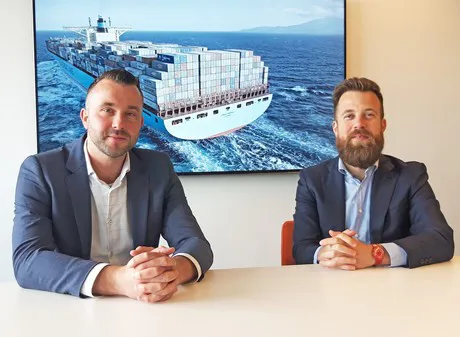A few years ago, Maersk, the largest shipper of containers globally, decided to start focusing on their core activities: shipping and transporting goods, according to Edwin Visser, Trade & Commodity Finance Executive, and Wouter van den Bosch, Trade Finance Sales Executive for Maersk. The transport and logistics company asked itself the question: ‘What are our customers missing in the field of international trade?’ Financing turned out to be one such aspect.
Edwin and Wouter increasingly see that banks are less accommodating when financing the working capital of their customers, and that this creates a need for different kinds of financing. This allows Maersk to be distinctive with Maersk Trade Finance in the competitive transport sector. The financing mostly focuses on supplying working capital, and the goods transported by the company are the collateral in this.
 Edwin Visser en Wouter van den Bosch, Maersk
Edwin Visser en Wouter van den Bosch, Maersk
Fewer documents
Traditional financing of international trade is often taken care of with a Letter of Credit (L/C), or other agreements coupled to documents. This requires a lot of time, is labour intensive and has high costs. Because Maersk has mapped their trade flows and because the goods are physically transported by them and serve as collateral, the Maersk Trade Finance products are less dependent on documents and the use of L/C, for instance, can be avoided. “When a container is gate-in (received), financing can be started even before a Bill of Lading is drawn up,” Edwin says. An additional advantage is that during transport, Maersk has the management and control of the financed goods. Because of this, the option is technically created to finance stocks already in transport, and to minimise and manage transport risks.
Maersk Trade Financing was developed in cooperation with customers three years ago, and was first launched in India. Wouter and Edwin have now noticed that there’s a lot of interest for this type of financing, and they mention they can finance more quickly than traditional channels. Maersk Trade Finance focuses on simplifying both the goods and money flows with digital products. The services are now also offered in countries including Singapore, the United Arab Emirates, the Netherlands, Spain, and as of recently Switzerland, the UK and Denmark. The financial solutions are developed to meet the specific needs of customers. The trade finance products have as their goal to help manage risks and provide access to additional working capital financing.
Wouter mentions that Maersk Trade Finance offers products for both importing and exporting customers, and also for cross-trade, in which case the goods don’t call in at the commercial enterprise, but are shipped directly from the seller in Africa, for example, to the eventual buyer in the Middle East. For importing companies in particular, the option to finance their sailing goods is a welcome addition to the financing often already in place. A major benefit of this type of financing is Maersk’s global network. “Because of our extensive network, we have a good image of the local situation, and we tend not to be afraid of anything,” Edwin concludes.
